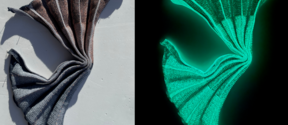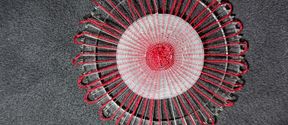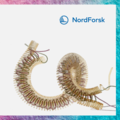Full title of the project: Autonomously adapting and communicating modular textiles (European Research Council – European Commission)
More about the project:
This project contributes to a paradigm shift for smart soft materials into user-customizable textiles that autonomously interact with their environment and communicate through changes in color or shape. This will be done by coupling modular thermo- and photo-actuators to the traditional European fiber art of bobbin lace. The envisioned color-shape-communicative textile networks will include an on/off command of embedded functionalities by modifying an established concept – coiled yarn thermoactuators – to have different selective coatings on inner and outer surfaces of the coils.
Furthermore, it is intended to create unprecedented photoactuating coiled yarns, in which visible light turns on the functionality in a thread. The developed nonconformal coating techniques will also enable multifunctional threads, in which different parts of the thread can be commanded by different wavelengths of light. Two-dimensional multifunctional structures will be developed using these thermo- and photo-actuating threads as building blocks. The modularity of these building blocks, combined with the multiple thread system and three different braiding actions of bobbin lace, will enable a wide combinatorial parameter space for interactive network structures. We will demonstrate a textile that can, either upon illumination or thermal stimulus, change its color, its breathability/permeability, and activate a third function, such as colorimetric detection of a biomarker.
These textiles could be used in clothes or window shades, e.g. adapting their warming/cooling capacity based on the external temperature or solar illumination. Such functional textiles would indirectly decrease the need for heating/cooling many buildings and allow energy savings, thus providing an important economic opportunity. Co-creating further textile innovations with communities of bobbin lacemakers will ensure that the impact of the action goes beyond the conventional in terms of both technological and societal impact.
Project team
Pedro Silva, Postdoctoral Researcher
Pedro Silva is currently undergoing his second postdoctoral term, devoted to studying structural-functional and smart materials in Jaana Vapaavuori's group. His PhD studies explored the dynamics of filaments with innovative geometries by using computer simulations and spinning techniques to produce anisotropic micro elastomers. This project is based on successful preliminary work on textiles done by this team during the summer of 2021.
Mithila Mohan, Project Employee













